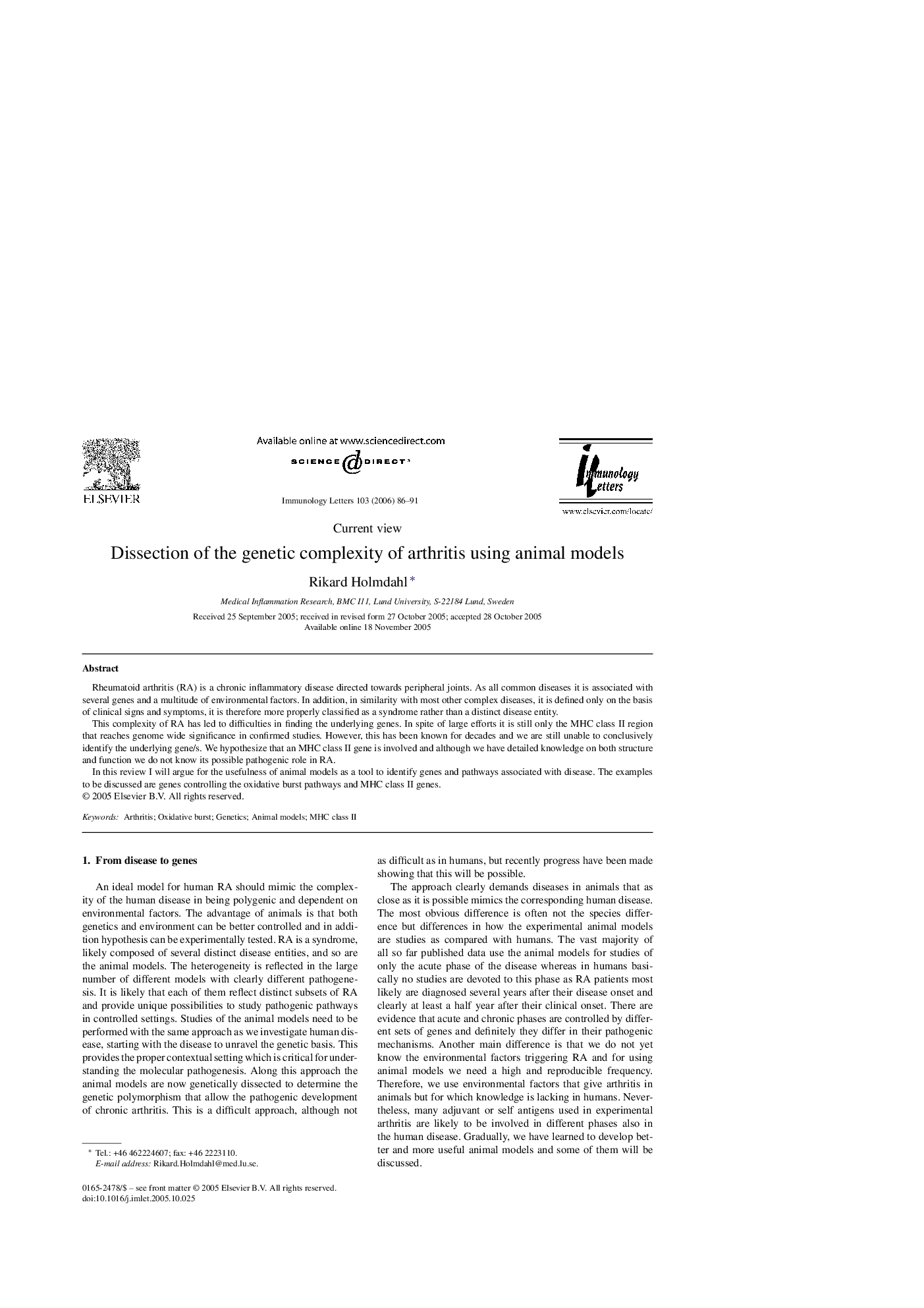| Article ID | Journal | Published Year | Pages | File Type |
|---|---|---|---|---|
| 3356514 | Immunology Letters | 2006 | 6 Pages |
Rheumatoid arthritis (RA) is a chronic inflammatory disease directed towards peripheral joints. As all common diseases it is associated with several genes and a multitude of environmental factors. In addition, in similarity with most other complex diseases, it is defined only on the basis of clinical signs and symptoms, it is therefore more properly classified as a syndrome rather than a distinct disease entity.This complexity of RA has led to difficulties in finding the underlying genes. In spite of large efforts it is still only the MHC class II region that reaches genome wide significance in confirmed studies. However, this has been known for decades and we are still unable to conclusively identify the underlying gene/s. We hypothesize that an MHC class II gene is involved and although we have detailed knowledge on both structure and function we do not know its possible pathogenic role in RA.In this review I will argue for the usefulness of animal models as a tool to identify genes and pathways associated with disease. The examples to be discussed are genes controlling the oxidative burst pathways and MHC class II genes.
